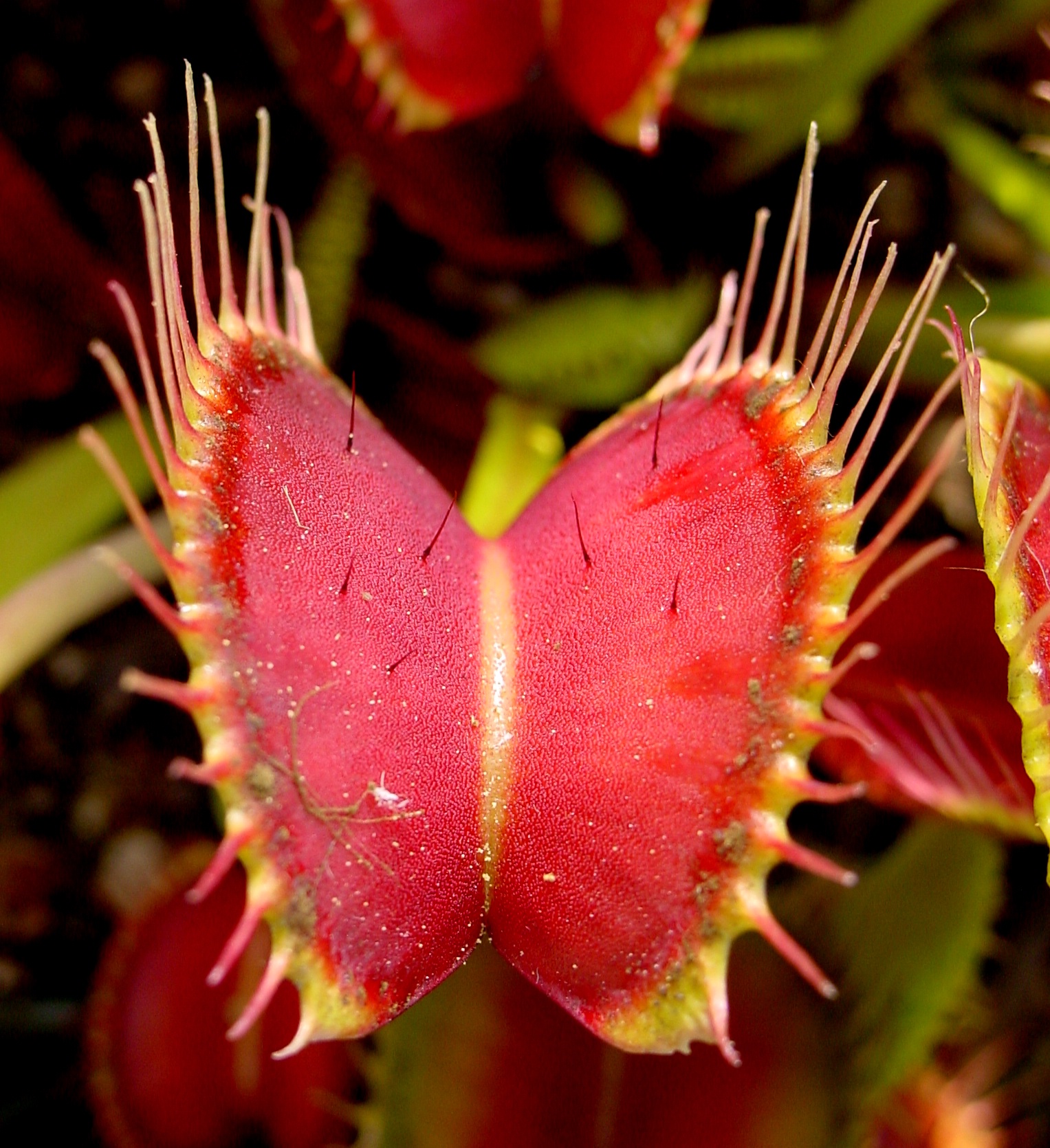This article was published in Scientific American’s former blog network and reflects the views of the author, not necessarily those of Scientific American

"Venus Flytrap showing trigger hairs". Licensed under CC BY-SA 2.5 via Wikimedia Commons.
Plants aren’t generally considered capable of mental gymnastics exceeding the ability to determine the directions of the big shiny yellow thing and the yummy root food. But now, thanks to new research from Germany, we now know that the Venus flytrap – carnivorous star of stage and screen -- can not only count, it can count at least to 60.
Why? Because that’s about the number of times a struggling prey insect or spider will trip the trigger hairs on the inside of its trap in the space of an hour, and also the maximum number of stimuli with which the scientists have tested the plants by manually stimulating the hairs.
On supporting science journalism
If you're enjoying this article, consider supporting our award-winning journalism by subscribing. By purchasing a subscription you are helping to ensure the future of impactful stories about the discoveries and ideas shaping our world today.
The Venus flytrap, Dionaea muscipula, is famous for capturing and eating insects, one of several carnivorous plants that share this ability. As the authors of the new study so aptly put it, “The tips of Dionaea leaves have developed into bilobed snap trap-type capture organs, equipped with a number of mechano-sensitive hairs and a densely packed array of glands.”
Inside the trap are those mechano-sensistive trigger hairs. Like a booby-trap in an Indiana Jones film, touching these innocuous-looking plant hairs converts the motion into an electrical signal called an action potential (the same kind of electrical cascade that our neurons use to pass messages along) that tells the plant when to set its fell machinery in motion. The signals travel through the entire trap to reach the plant’s motor tissue and digestive glands.
One signal is not enough, but the plant “memorizes” it. Previous work had established it takes two triggers within about thirty seconds to slam the trap shut. Two strikes and you’re out.
Scientists wanted to know not just how many triggers were required to trip the trap, but also how many were judged sufficient to get the flytrap’s digestive juices flowing.
The new work, by a team of scientists from Germany published in the journal Current Biology in January, demonstrates that at two impulses, not only does the trap close, secretion of the plant hormone jasmonic acid ramps up. Jasmonic acid is used to send many messages by plants, but one of the more common is that the plant is touching something.
At five hair sensor-trips, the plant starts flooding the trap with expensive-to-make nitrogen-rich digestive enzymes (nitrogen is just about always in short supply in nature) and nutrient-absorbing channels for ammonium, potassium, and especially sodium. From then on, the more the insect struggles and touches trigger hairs, the more of this flesh-eating and nutrient-absorbing slurry it secretes. Since bigger insects are likely to trigger more signals, the digestive expenditure is scaled to the probable size of the meal. Insidious.
Here’s a nice video by the German scientists that sums up, with a few visual aides to help.
The plant appears to use jasmonic acid to trigger both the trap closure and secretion of the digestive enzymes and nutrient channels, because plants sprayed with a form of jasmonic acid – but not touched – still close and begin to secrete enzymes. Conversely, applying a jasmonic acid inhibitor to the plant stopped trap closure and enzyme and nutrient transporter secretion even when the plant was touched up to 60 times.
Why does sodium seem to be such an important mineral for the plant?
Along with potassium, sodium ions are the essential ingredient in the action potential signaling cascade in animal neurons. Meat is a common source of sodium for humans. In traps fed with insects, the scientists found the sodium concentration did rise in the trap itself, but not in the plant tissue supporting the trap. But the flood of sodium ions does not seem to have affected the action potentials, meaning the plants probably use some other ion in their action potential signal cascade.
Sodium appears to be used, instead, as a way of helping the plants regulate proper cell pressure and osmotic balance. Potassium normally does the job, but flytraps grow in potassium-poor soils.
Of course, if a green plant can both count and remember the sum in order to judiciously digest their meals, that can mean only one thing. Next up on Fox: Are you Smarter Than a Venus Flytrap?
Reference
Böhm, Jennifer, Sönke Scherzer, Elzbieta Krol, Ines Kreuzer, Katharina von Meyer, Christian Lorey, Thomas D. Mueller et al. "The Venus Flytrap Dionaea muscipula Counts Prey-Induced Action Potentials to Induce Sodium Uptake." Current Biology (2016).